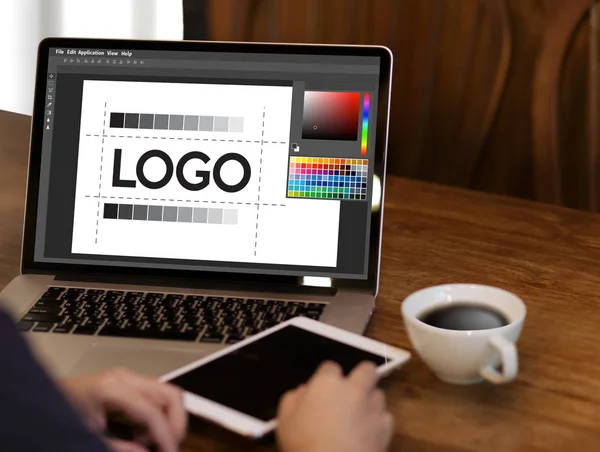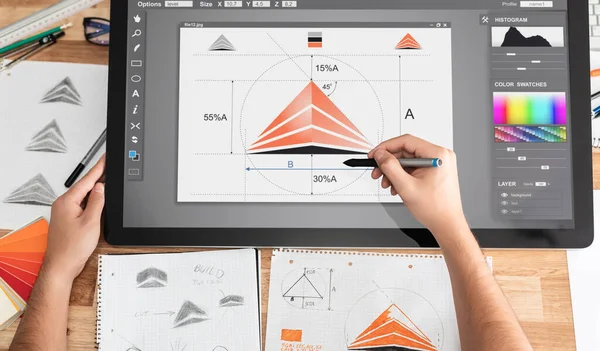How Text-Based Logos Maximize Your Brand Impact?
Highlights
- Text-based logos rely on typography to convey a brand’s identity, focusing on fonts, spacing, and layout.
- They are simple, timeless, and versatile across websites, social media, and merchandise.
- Text-based logos build trust through professionalism and clear branding, eliminating ambiguity.
- To make text-based logos unique, choose fonts wisely, add subtle design elements, and play with colors.
- These logos are cost-effective, easy to update, and keep your brand name clear and recognizable.
When creating a logo for your business, you might wonder: “Does logo need text?” The answer depends on your branding goals. Text-based logos have proven incredibly effective for businesses aiming for simplicity, professionalism, and strong brand recognition. These logos rely entirely on typography to make a statement, ensuring that your brand name remains the focus.
In this guide, we’ll discuss what are text-based logos, their benefits, and how to make them so that you can elevate your brand and leave a lasting impression.
What Is a Text-Based Logo?
A text-based logo (wordmark) is a design that uses text as the logo’s centerpiece. Instead of incorporating graphics, symbols, or elaborate visuals, it focuses on typography.
The design is simple but effective, relying on the font, spacing, color, and layout to convey a brand’s identity. Well-known examples of text-based logos include brands like Google, FedEx, and Coca-Cola.
Why Are Text-Based Logos So Popular?

Here are some reasons that make text-based logos demanding:
1. Simplicity Creates Memorability
Text-based logos stand out because of their simplicity. In a busy world, a clean, easy-to-read logo can stick in people’s minds longer than one overloaded with details.
2. They’re Timeless
Unlike trendy graphic designs that may feel outdated in a few years, text-based logos often have a timeless appeal. They rely on classic typography principles, ensuring their longevity.
3. Versatile for All Platforms
Text-based logos adapt seamlessly if displayed on your website, a social media profile, or printed on merchandise. Their simplicity ensures they look great in any format.
How Does a Text-Based Logo Build Trust?
A text-based logo can help build trust and credibility with your audience in several ways:
Professional Appearance
A clean, well-designed logo creates an image of professionalism, showing customers that your brand pays attention to detail.
Clear Branding
Using text ensures your brand name is always front and center, leaving no room for confusion. Customers immediately know who you are and what you represent.
Does Logo Need Text to Be Impactful?

The question remains: does logo need text to make an impact? For many brands, the answer is yes. Text-based logos eliminate ambiguity by focusing solely on the brand name. Without symbols or images, your audience doesn’t have to guess what the logo represents.
While graphic logos work well for certain industries, text-based logos are ideal to emphasize your name and make it the focal point of your branding.
How to Make Your Text-Based Logo Unique?
Text-based logos are simple, but that doesn’t mean they have to be boring. Here’s how you can make yours stand out:
Choose the Right Font
The font you choose is critical. For example:
- A serif font conveys tradition and sophistication.
- A sans-serif font feels modern and minimalistic.
- A handwritten font adds a playful or creative touch.
Add Subtle Design Elements
Consider incorporating unique features like:
- Customizing certain letters in your font.
- Adding a creative ligature or connecting strokes.
- Experimenting with gradients or textures.
Play with Color
Colors play a huge role in how your logo is perceived. Use bold, bright colors for energy or muted tones for a calm, professional feel.
Real-Life Examples of Effective Text-Based Logos
Several iconic brands have text-based logos that are instantly recognizable:
- Google: Its clean typography and playful, vibrant colors reflect innovation and approachability.
- FedEx: The clever use of negative space creates an arrow, symbolizing speed and precision.
- Coca-Cola: A classic script font evokes nostalgia and timelessness.
These examples show how simple text, when used creatively, can convey a brand’s values and identity.
Benefits of Choosing a Text-Based Logo
Still unsure if a text-based logo is the right choice for your business? Consider these advantages:
- Cost-Effective: Text-based logos are often easier and less expensive than complex graphic logos.
- Easy to Update: If your brand evolves, tweaking a font or color is simpler than redesigning an elaborate logo.
- Clear and Recognizable: With no distracting visuals, your brand name takes center stage, ensuring customers remember it.
How to Make a Text Logo?
Designing a text-based logo doesn’t require advanced design skills. Here are some steps that you need to follow:
- Understand Your Brand: Define your values, personality, and audience.
- Select a Font: Select a font that reflects your brand’s style, which is modern, elegant, or playful.
- Experiment with Layout: Try different alignments, sizes, and spacing.
- Pick a Color Scheme: Use colors that evoke the right emotions for your target audience.
- Test Across Platforms: Ensure the logo looks great in various sizes and formats.
- Seek Feedback: Share your design with peers or customers for input.
Summary
In a world where visual branding can make or break a business, text-based logos offer a timeless and impactful solution. They are simple, clear, and versatile, making them ideal for businesses that want to emphasize their brand name. With the right font, color, and design elements, a text-based logo can help your brand stand out while remaining professional and approachable.
FAQs
How to Design a Text Logo?
Select a font and color scheme that matches your brand’s personality. Keep the design simple and experiment with spacing, alignment, or custom elements for uniqueness. Test it across different sizes and mediums to ensure versatility.
How Does a Symbol or Slogan Become Credible?
A symbol or slogan gains credibility through consistent use, relevance to your brand values, and quality association. Over time, trust builds as it represents positive customer experiences. Marketing and storytelling further strengthen its emotional connection.






